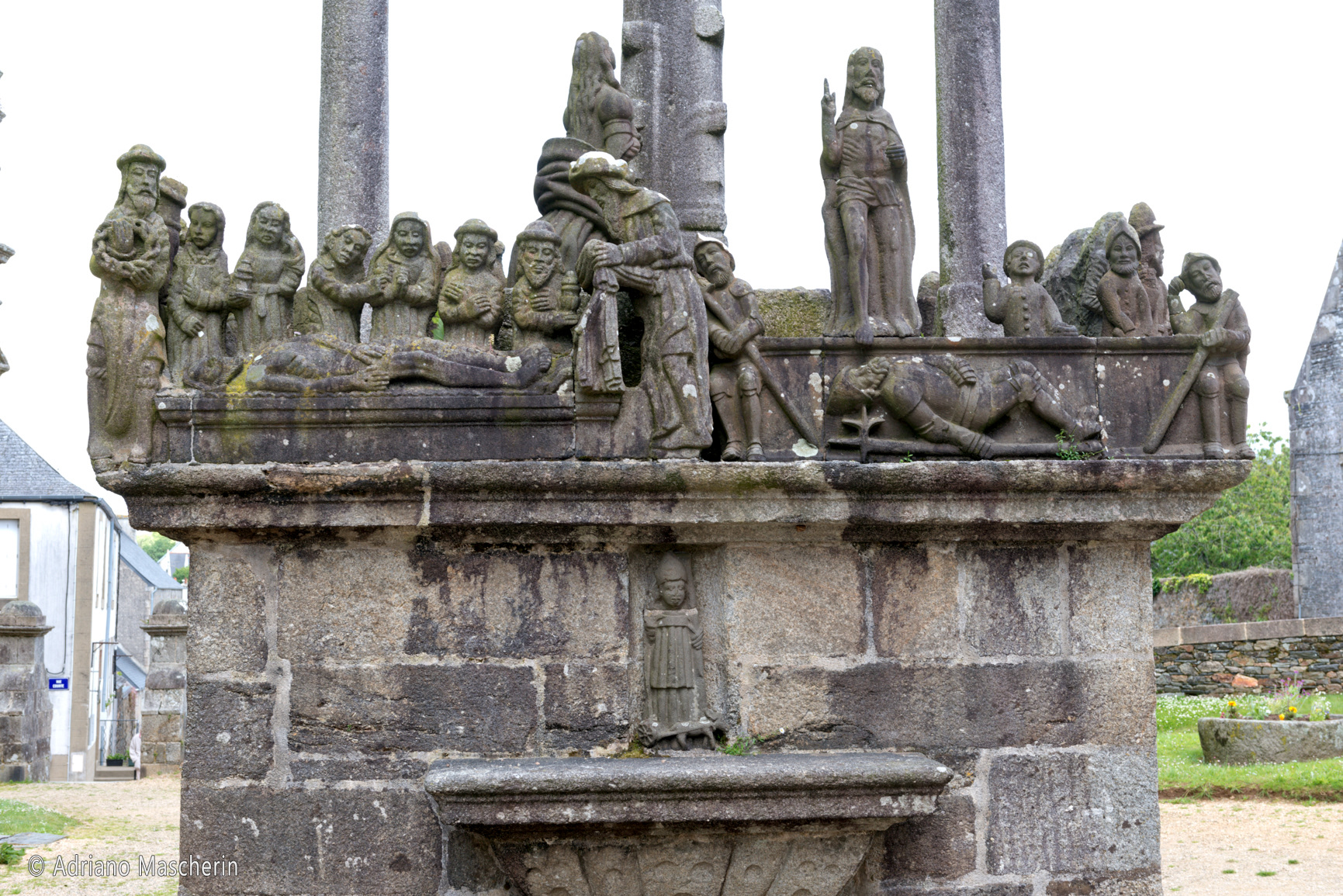La via bretone alla devozione risulta particolarmente evidente nelle architetture religiose, meraviglie spontanee che non hanno paragoni altrove. Si tratta di quelli che gli studiosi hanno definito “recinti parrocchiali” e che, in molti borghi, racchiudono il senso cristiano del passaggio degli uomini sulla Terra, trasponendo sull’austera pietra grigia sia la gioia della nascita sia un memento alla morte. Vi si accede attraverso un arco e ospitano, oltre alla chiesa e alla sacrestia, un ossario dove venivano raccolti (ed esposti con crudezza) i resti mortali di generazioni di parrocchiani e, in posizione sempre centrale a sottolinearne l’importanza, una rappresentazione architettonico- scultorea del Calvario.
I calvaires avevano una funzione didattica: concepiti come una sorta di fumetto - e curiosamente paragonabili, ad altre latitudini, alle piramidi fitte di divinità del pantheon indù che sormontano i templi dell’India - raccontano le tappe della Passione accanto a episodi del Nuovo testamento e sono sormontati da una maestosa crocifissione che si staglia nel cielo, spesso drammatico, di questo lembo del continente.
E che, di volta in volta, mostra il Cristo tra i ladroni o con ai piedi le figure di Nicodemo e Giuseppe d’Arimatea o quelle della Vergine, di Maria Maddalena o di Salomè. 0, ancora, riproduce una rustica - ma non per questo meno incisiva - Pietà di sapore michelangiolesco. Scolpiti con mano sapiente tra la fine del XV e la metà del XVII secolo da artisti (purtroppo in gran parte rimasti anonimi), contano decine di personaggi - in quello del borgo di Saint-Thégonnec, uno dei più fastosi, ce ne sono oltre 200 - rappresentati con estremo gusto per il dettaglio, nonché con un’ evidente propensione alla “localizzazione”. Molti di essi, infatti, indossano abiti inequivocabilmente bretoni o, come nel caso dei carnefici romani di Gesù, ricalcano nelle fattezze e nell’armatura i tercios, i terribili soldati di Filippo II che razziarono la regione alla fine del Cinquecento, al tempo della guerra anglo-spagnola.
In alcuni casi, agli episodi canonizzati dai Vangeli sono state aggiunte incongrue varianti prese dalla tradizione popolare. Come la leggenda di Katel Gollet, o Catherine “la pécheresse”, che sui calvari di Guimiliau e Plougastel- Daoulas è raffigurata nuda mentre viene trafitta dal tridente del diavolo. La storia di costei - considerata da queste parti come la “donna perduta” per eccellenza - narra che, travolta dalla passione, ricevette dal suo amante (che si rivelò essere il Maligno) il compito di rubare le ostie in chiesa. Finendo poi all’inferno.
Il fatto, poi, che buona parte dei calvaires celi una scala interna, che permetteva al parroco di arrampicarsi fino alla base del crocifisso e dominare così i fedeli, la dice lunga sul pathos con cui venivano condotti i sermoni, nonché sul preciso intento moralizzatore della chiesa bretone.
Accanto ai complessi “sottotestì” dottrìnali, i calvari mostrano anche una notevole varietà architettonica e artistica: ce ne sono di rettangolari, circolari, ottagonali (il numero otto richiama il simbolo dell’infinito, e dunque l’eternità) e presentano elementi che passano dal gotico al rìnascìmentale, fino al barocco. Questa molteplicità di stili e particolari sempre più esibiti - si va dall’ascetìsmo del quattrocentesco calvaire di Tronoén. alle porte di Pont-l’Abbé, fino alla fantasia delirante di quello di Plougonven - ha una motivazione molto terrena. Costruiti, come si diceva, nell’arco dei due secoli che furono l’età dell’ oro della Bretagna, i “recinti parrocchiali” sono stati il terreno sul quale ogni borgo ha combattuto con i vicini una gara di bellezza, e soprattutto di ricchezza. Parafrasando il titolo del romanzo di Jean Genet, si potrebbe dire che, dal Finistère alla Còtes-d’Armor, sia andata in scena una Querelle des calvaires: se a Pleyben si costruiva un ardito campanile altro 48 metri, a Guimiliau rispondevano con le raffinate decorazioni sul calvario e sulla facciata della chiesa, a La Martyre con un ornatìssimo arco trionfale, a Saint-Thégonnec con l’ ossessiva addizione di statue e la costruzione di un elegante ossario rinascimentale. L’ansia di primeggiare si è tradotta anche in una vertigine di modelli stilistici e figurativi che, in quell’ epoca di floridi commerci marittimi, le maestranze locali ricevevano sotto forma di incisioni e disegni dei capolavori di Roma: copiarli era un modo per avvicinare questa remota regione alla città cuore della cristianità. Intorno al 1650, quando raggiunse l’apice della meraviglia, l’avventura dei calvaires si concluse: la Francia intraprese una serie di interminabili guerre contro gli inglesi e gli olandesi, interrompendo i flussi mercantili nei porti della Bretagna e facendo sprofondare la regione in un nuovo Medioevo di povertà. Agli abitanti, allora, non restò che la fede. Per mostrarla fecero di necessità virtù, tornando alla magia e al potente minimalismo del passato. E ripresero a scolpire i menhir traducendoli in nuovi
calvari, più piccoli e naif, proprio com’è accaduto a Saint-Uzec.
(Testo da Meridiani-Bretagna)
The Breton way to devotion is particularly evident in religious architecture, spontaneous wonders that have no comparison elsewhere. These are what scholars have defined as 'parish enclosures' and which, in many villages, contain the Christian meaning of the passage of men on Earth, transposing both the joy of birth and a memento of death onto the austere gray stone. It is accessed through an arch and hosts, in addition to the church and the sacristy, an ossuary where the mortal remains of generations of parishioners were collected (and crudely displayed) and, in a central position to emphasize their importance, an architectural representation- sculpture of Calvary.
The calvaires had a didactic function: conceived as a sort of cartoon - and curiously comparable, at other latitudes, to the pyramids dense with divinities of the Hindu pantheon that surmount the temples of India - they tell the stages of the Passion alongside episodes from the New Testament and they are surmounted by a majestic crucifixion that stands out in the often dramatic sky of this strip of the continent.
And which, from time to time, shows Christ among the robbers or with the figures of Nicodemus and Joseph of Arimathea at his feet or those of the Virgin, Mary Magdalene or Salome. 0, again, reproduces a rustic - but no less incisive - Pietà with a Michelangelo flavor. Sculpted with a skilful hand between the end of the fifteenth and the middle of the seventeenth century by artists (unfortunately most of them remained anonymous), there are dozens of characters - in that of the village of Saint-Thégonnec, one of the most sumptuous, there are over 200 - represented with extreme taste for detail, as well as with an evident propensity for 'localization'. Many of them, in fact, wear unequivocally Breton clothes or, as in the case of the Roman executioners of Jesus, trace the tercios in their features and armor, the terrible soldiers of Philip II who raided the region at the end of the sixteenth century, at the time of the war. Anglo-Spanish.
In some cases, incongruous variants taken from popular tradition have been added to the canonized episodes from the Gospels. Like the legend of Katel Gollet, or Catherine “la pécheresse”, who on the Calvaries of Guimiliau and Plougastel-Daoulas is depicted naked while she is pierced by the devil's trident. The story of her - considered in these parts as the 'lost woman' par excellence - tells that she, overwhelmed by her passion, she received from her lover of her (who turned out to be the Evil One) the task of stealing the hosts in church. Then ending up in hell.
The fact, then, that most of the calvaires conceal an internal staircase, which allowed the parish priest to climb up to the base of the crucifix and thus dominate the faithful, speaks volumes about the pathos with which the sermons were conducted, as well as the precise moralizing intent of the Breton church.
Alongside the complex doctrinal 'subtests', the Calvaries also show a remarkable architectural and artistic variety: there are rectangular, circular, octagonal ones (the number eight recalls the symbol of infinity, and therefore eternity) and present elements that pass from the Gothic to the Renaissance, up to the Baroque. This multiplicity of styles and details increasingly exhibited - ranging from the asceticism of the fifteenth-century calvaire of Tronoén. at the gates of Pont-l'Abbé, to the delusional fantasy of that of Plougonven - it has a very earthly motivation. Built, as we said, over the two centuries that were the golden age of Brittany, the 'parish enclosures' were the terrain on which each village fought with its neighbors a contest of beauty, and above all of wealth. . Paraphrasing the title of the novel by Jean Genet, it could be said that, from Finistère to Còtes-d'Armor, a Querelle des calvaires was staged: if in Pleyben a daring bell tower was built 48 meters high, in Guimiliau they responded with the refined decorations on the Calvary and on the facade of the church, in La Martyre with an ornate triumphal arch, in Saint-Thégonnec with the obsessive addition of statues and the construction of an elegant Renaissance ossuary. The eagerness to excel also translated into a vertigo of stylistic and figurative models that, in that era of flourishing maritime trade, the local workers received in the form of engravings and drawings of the masterpieces of Rome: copying them was a way to approach this remote region to the heart city of Christianity. Around 1650, when it reached the pinnacle of wonder, the adventure of the calvaires came to an end: France undertook a series of interminable wars against the English and the Dutch, interrupting the merchant flows in the ports of Brittany and plunging the region into a new Middle Ages of poverty. The inhabitants, then, were left with only faith. To show it they made a virtue of necessity, returning to the magic and powerful minimalism of the past. And they resumed sculpting the menhirs translating them into new ones
calvaries, smaller and naïve, just as happened in Saint-Uzec.
(Text from Meridiani-Brittany)
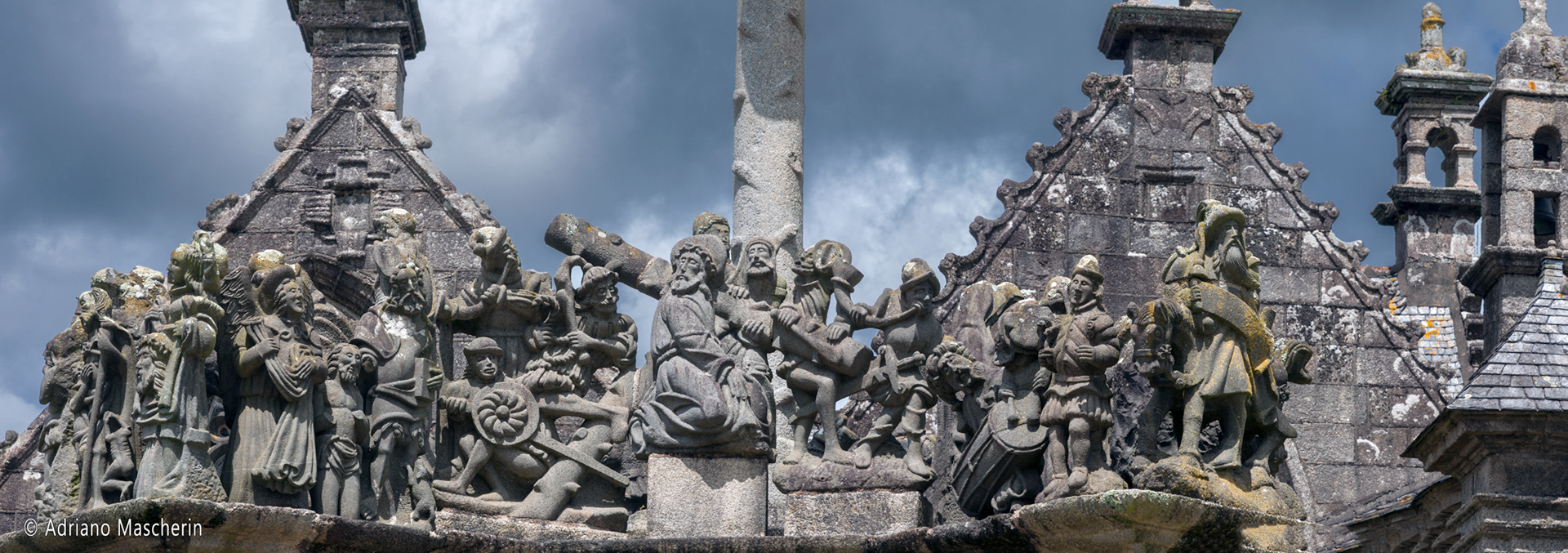
Guimiliau
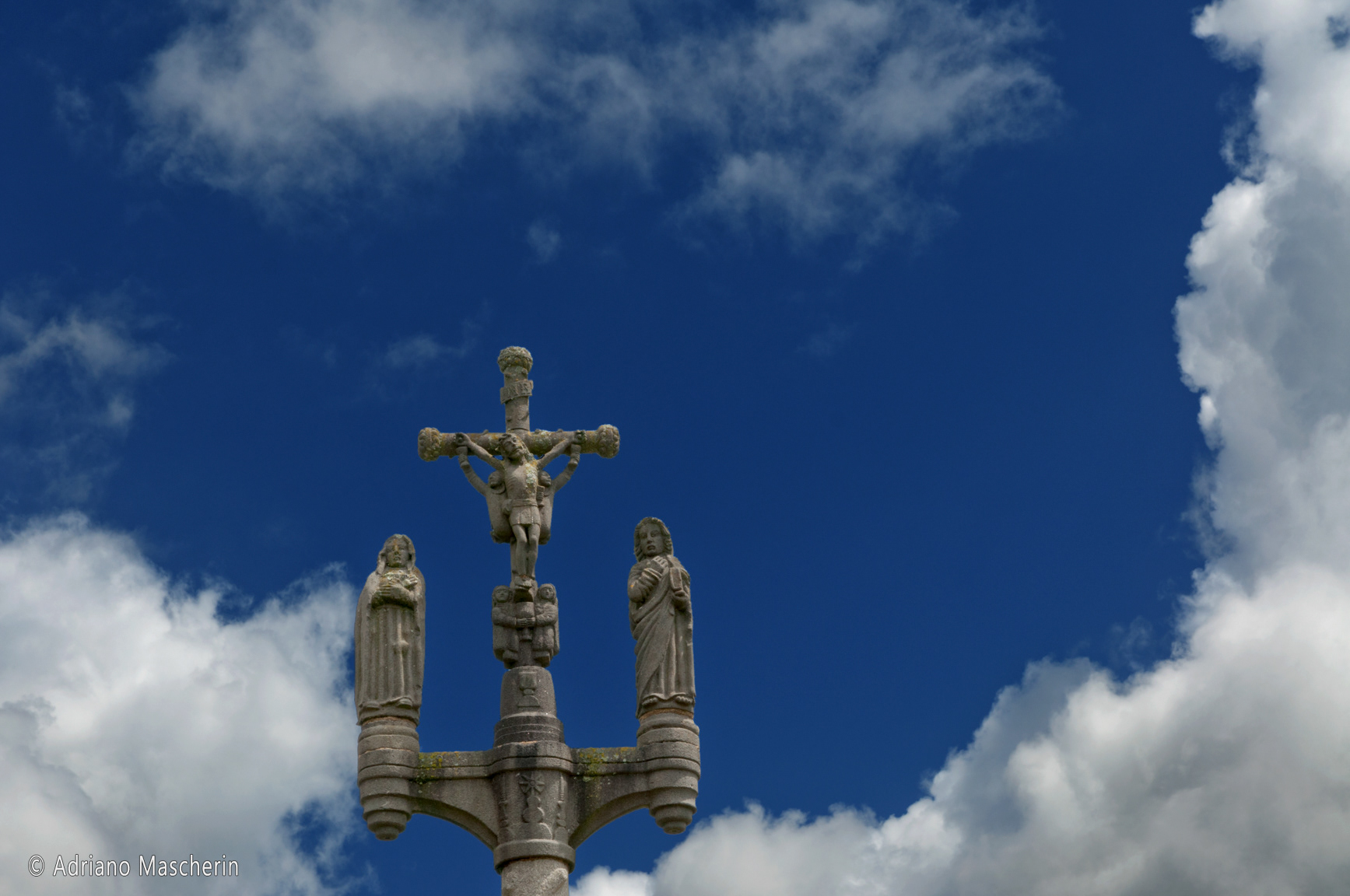
Guimiliau

Guimiliau
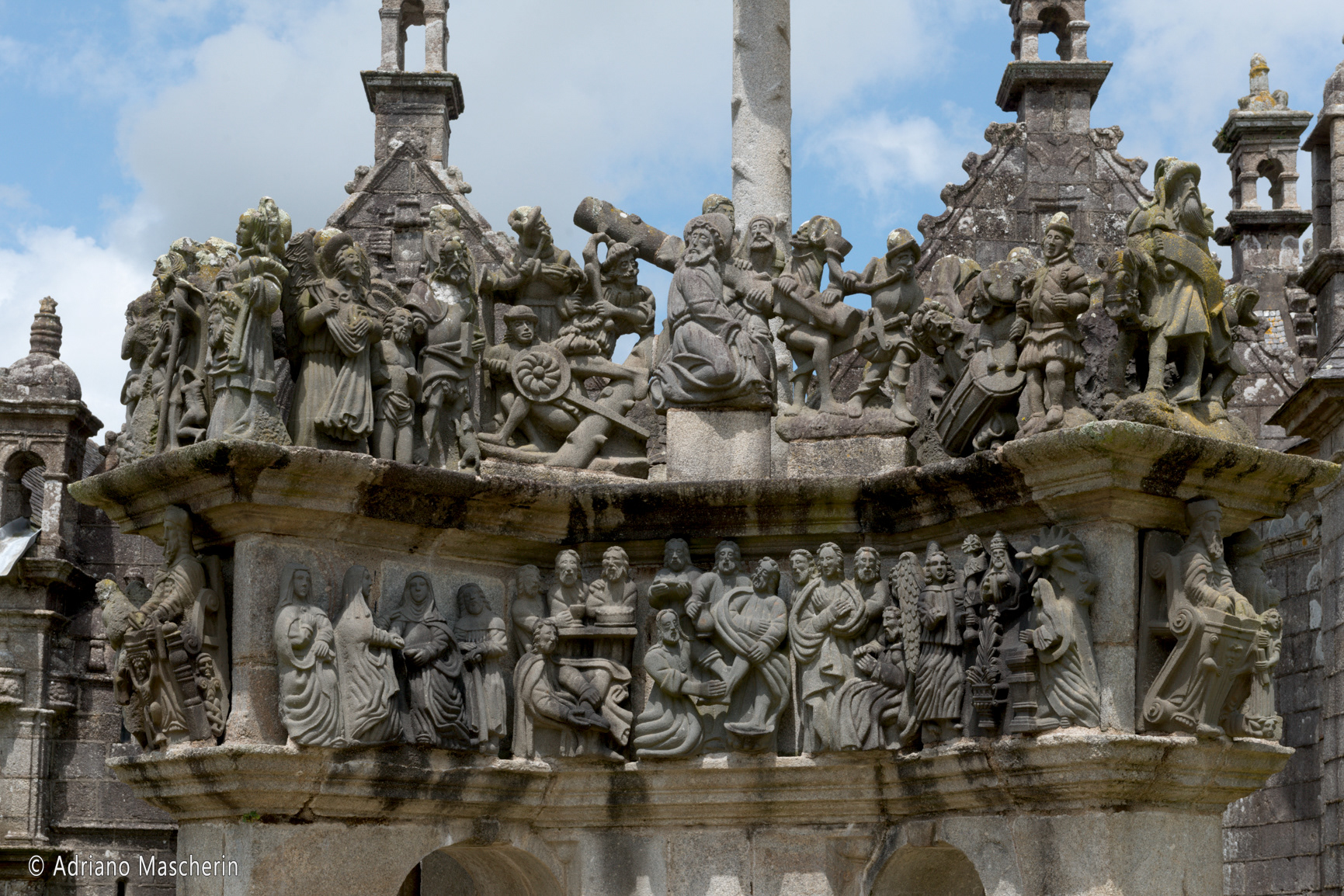
Guimiliau
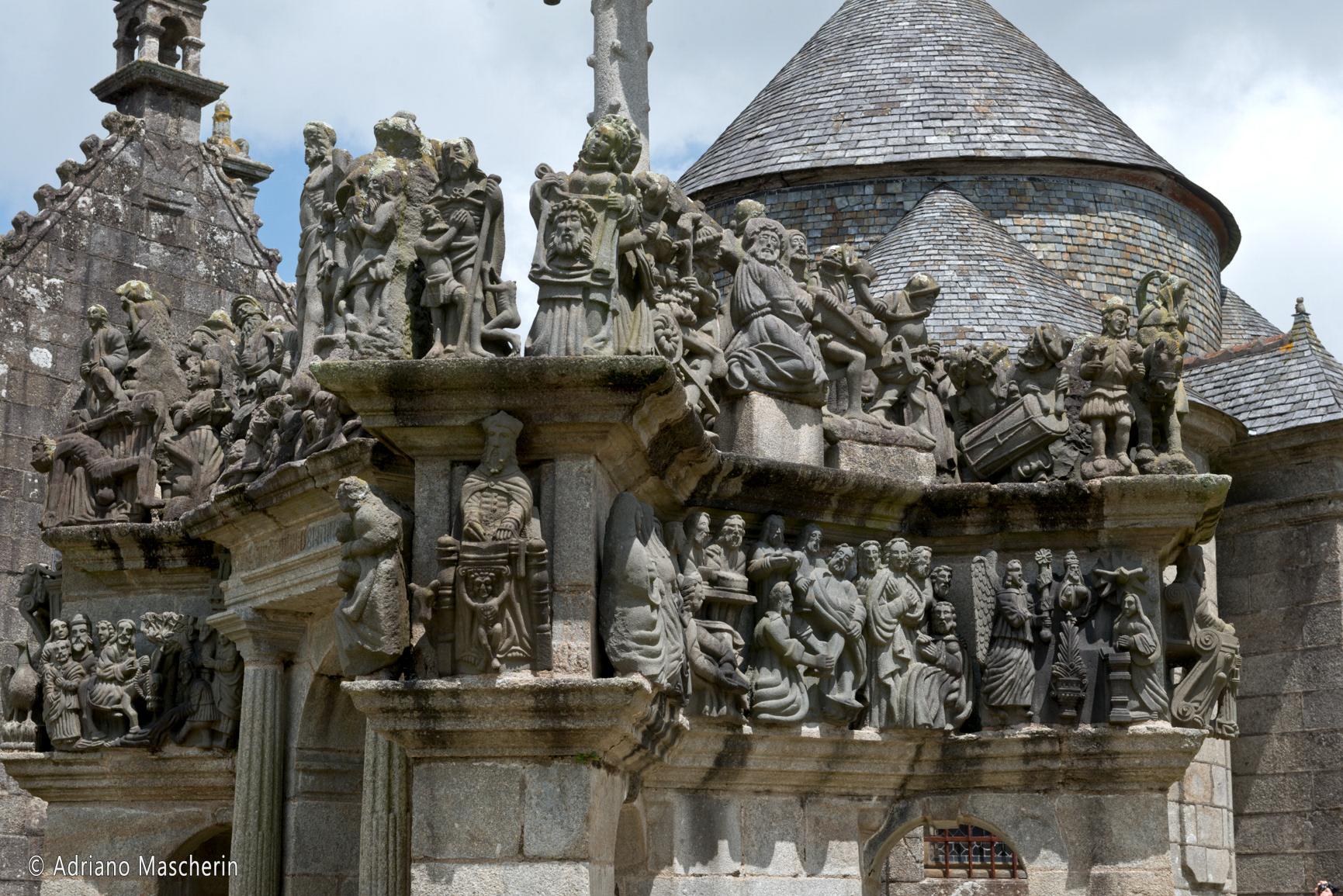
Guimiliau

Guimiliau
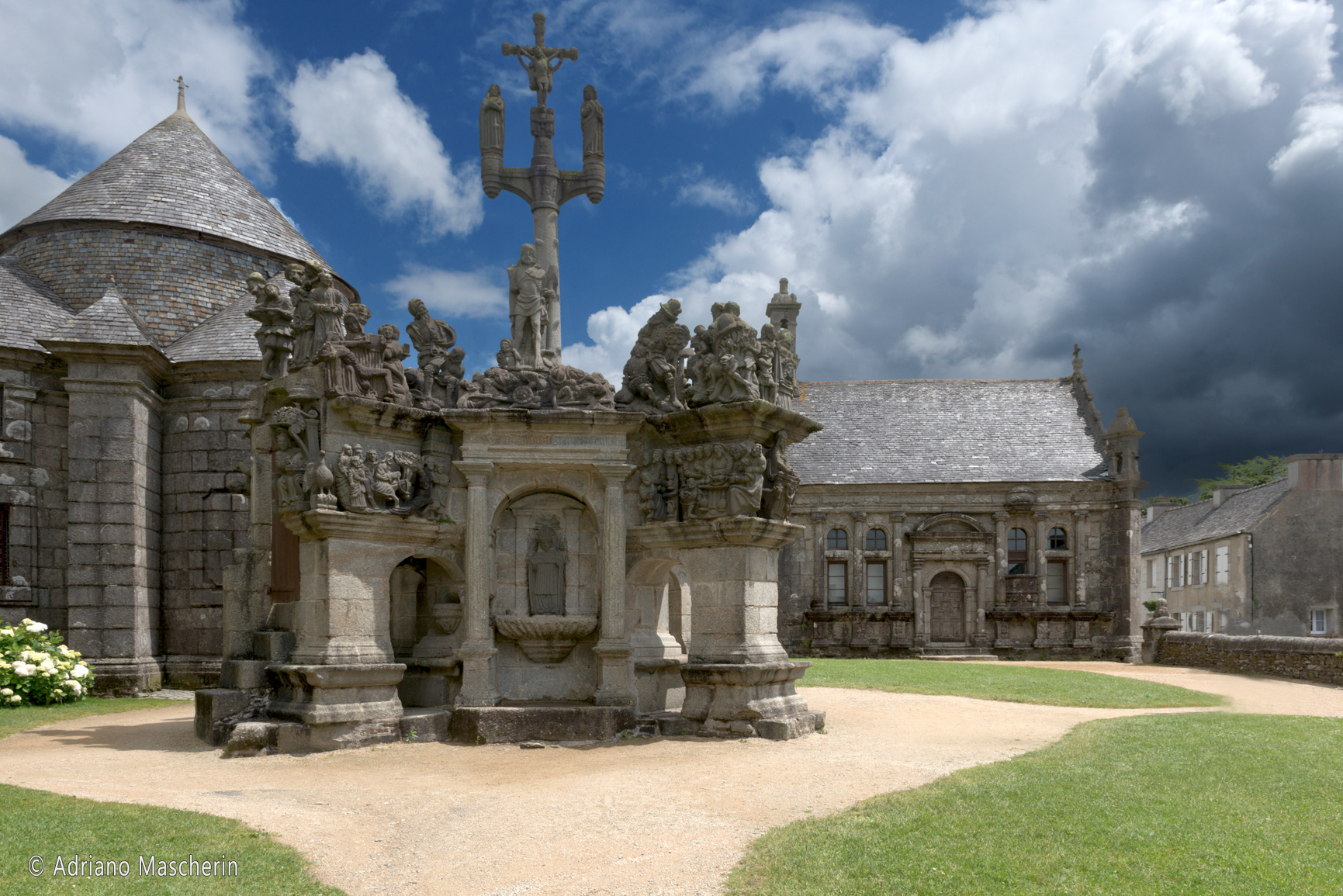
Guimiliau

Guimiliau
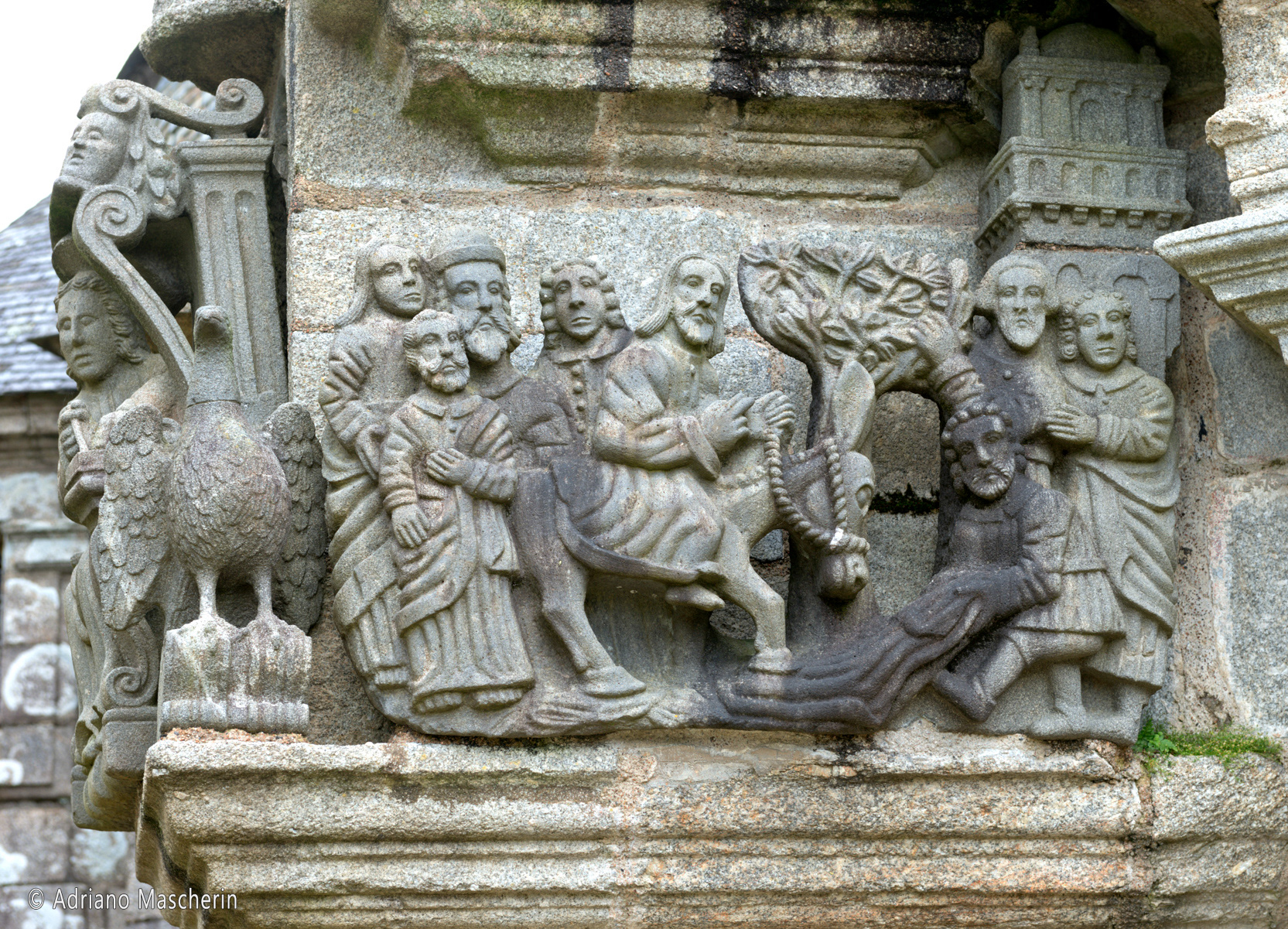
Guimiliau

Guimiliau

Guimiliau
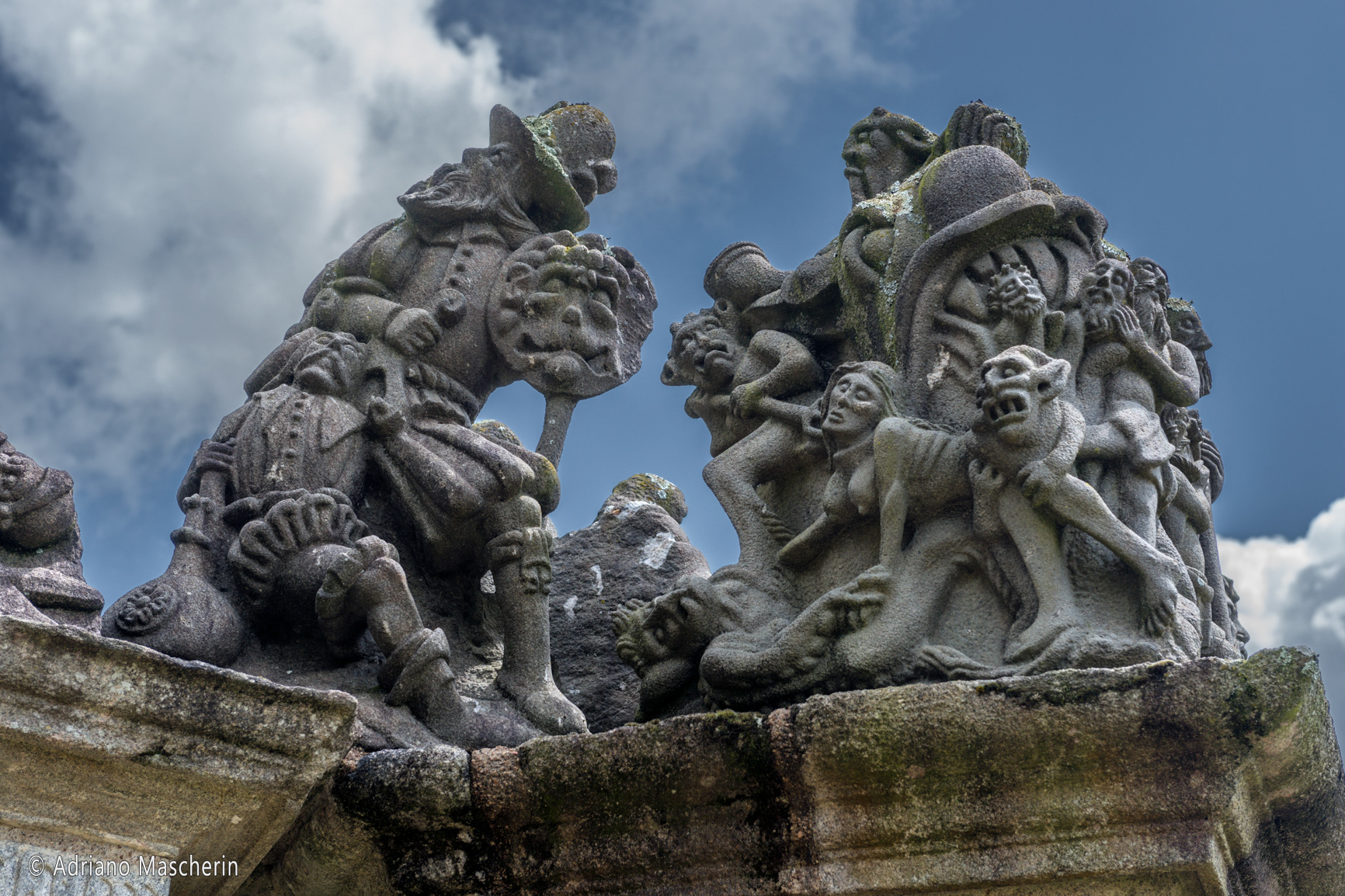
Guimiliau
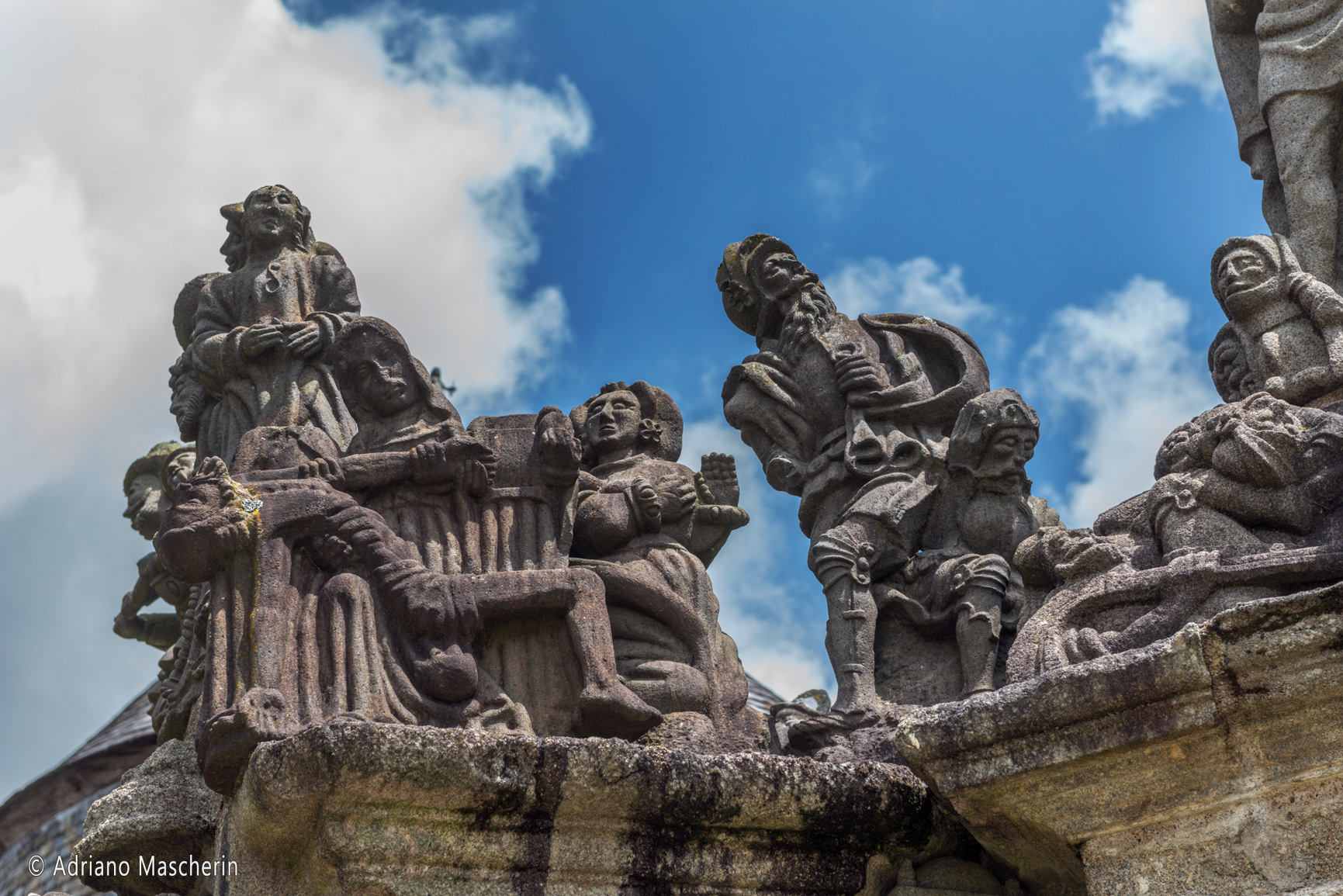
Guimiliau
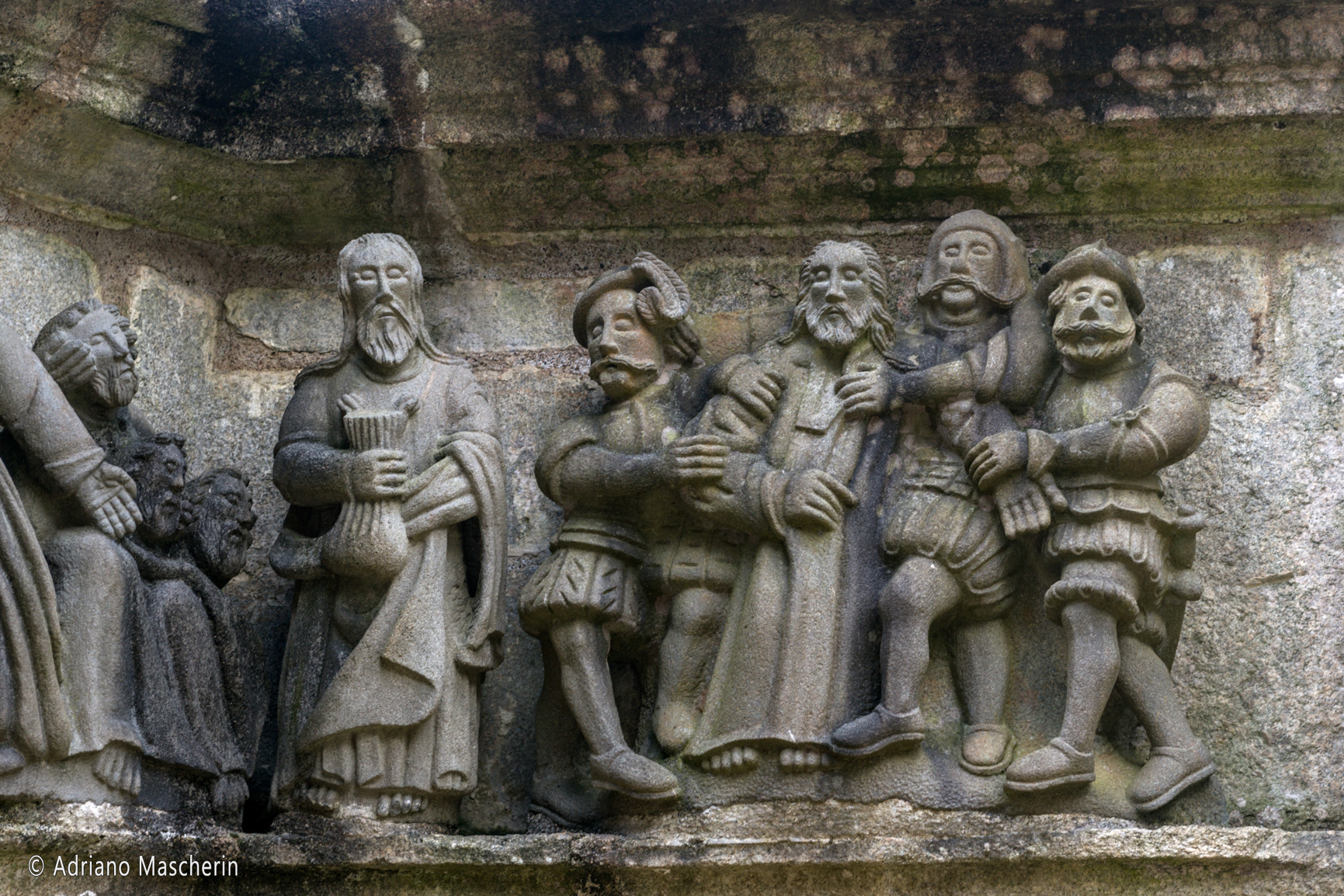
Guimiliau

Guimiliau

Guimiliau - Recinto parrocchiale - Parish enclosure
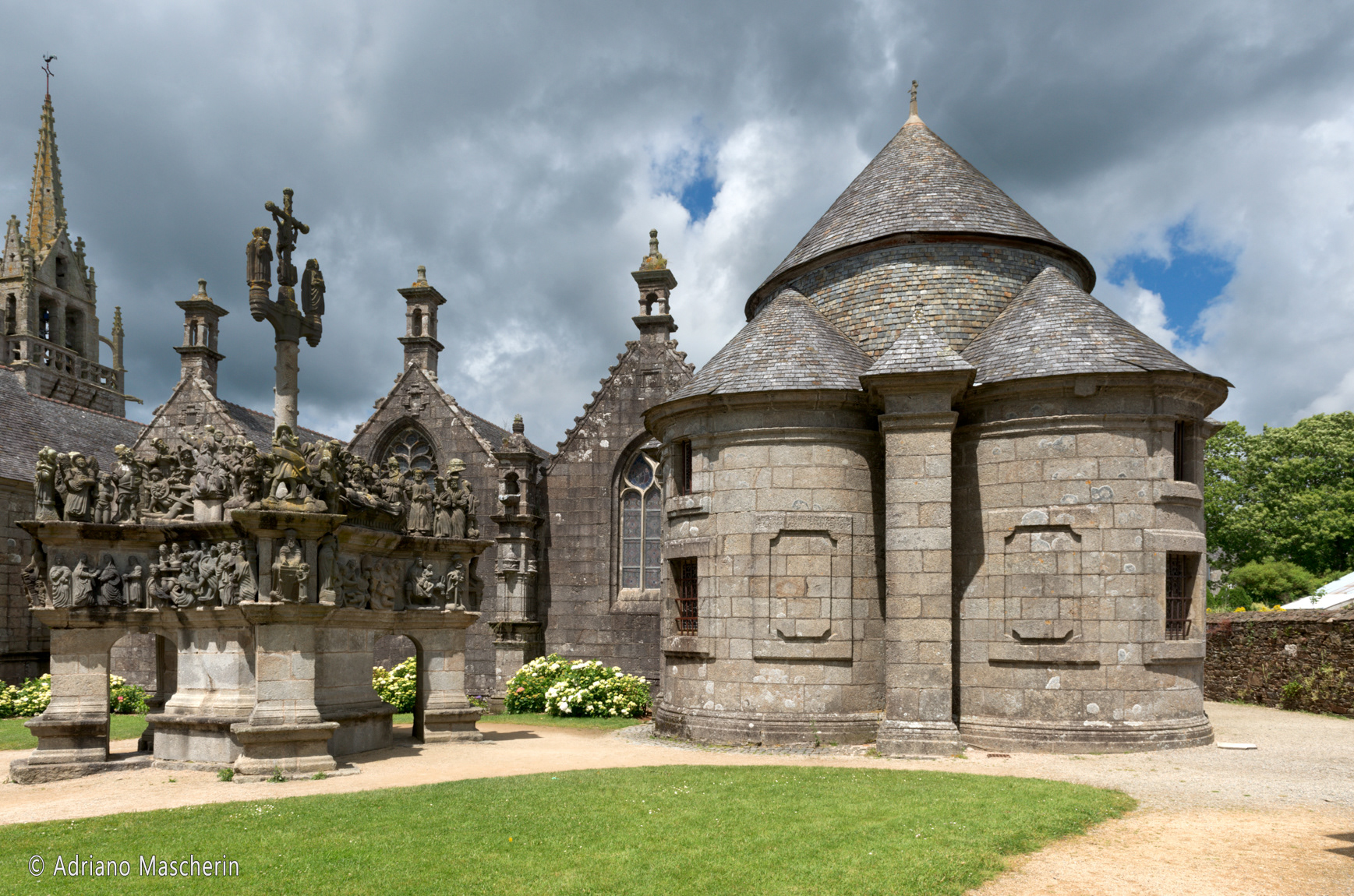
Guimiliau - Chiesa - Church

Pleyben
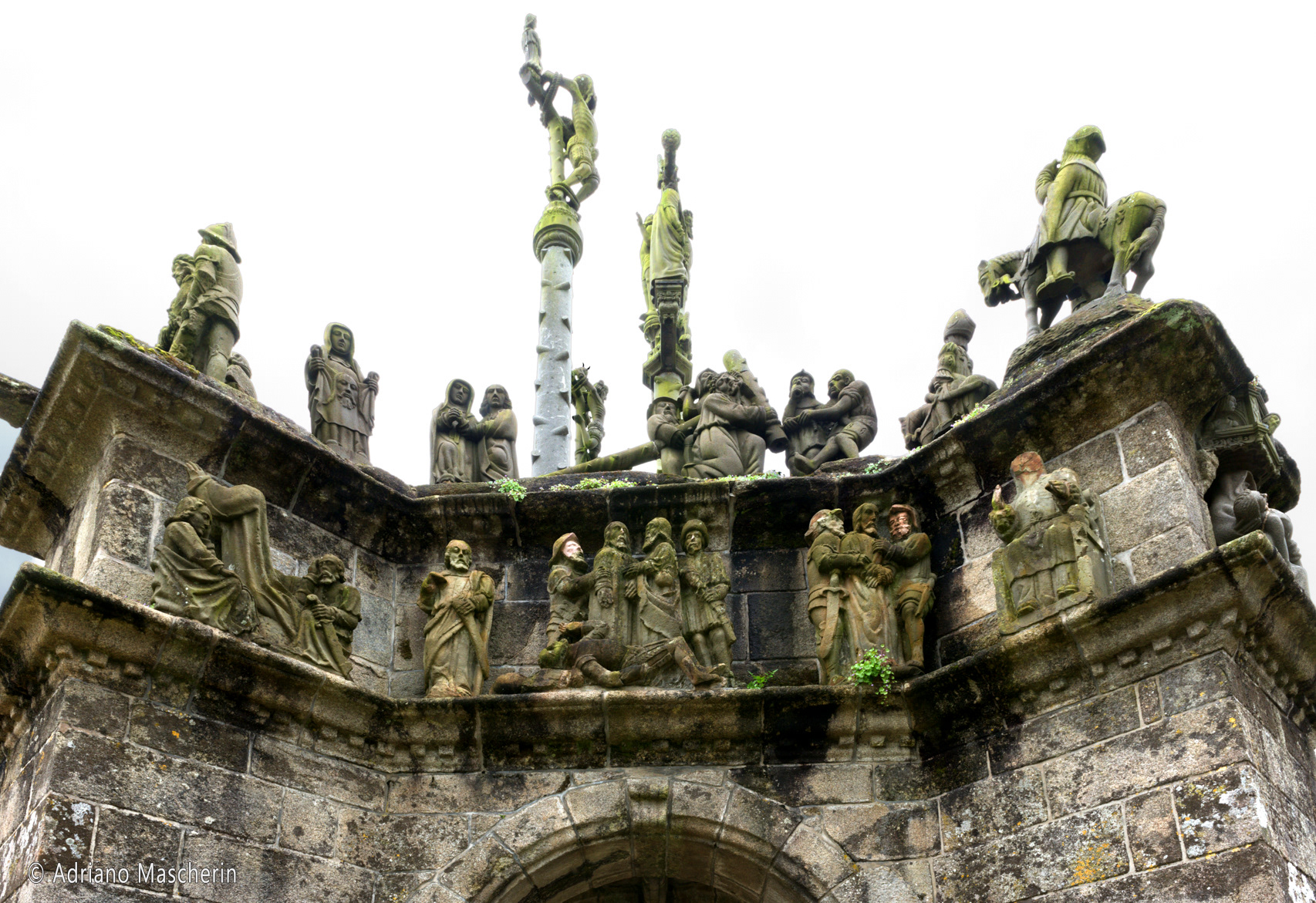
Pleyben

Pleyben
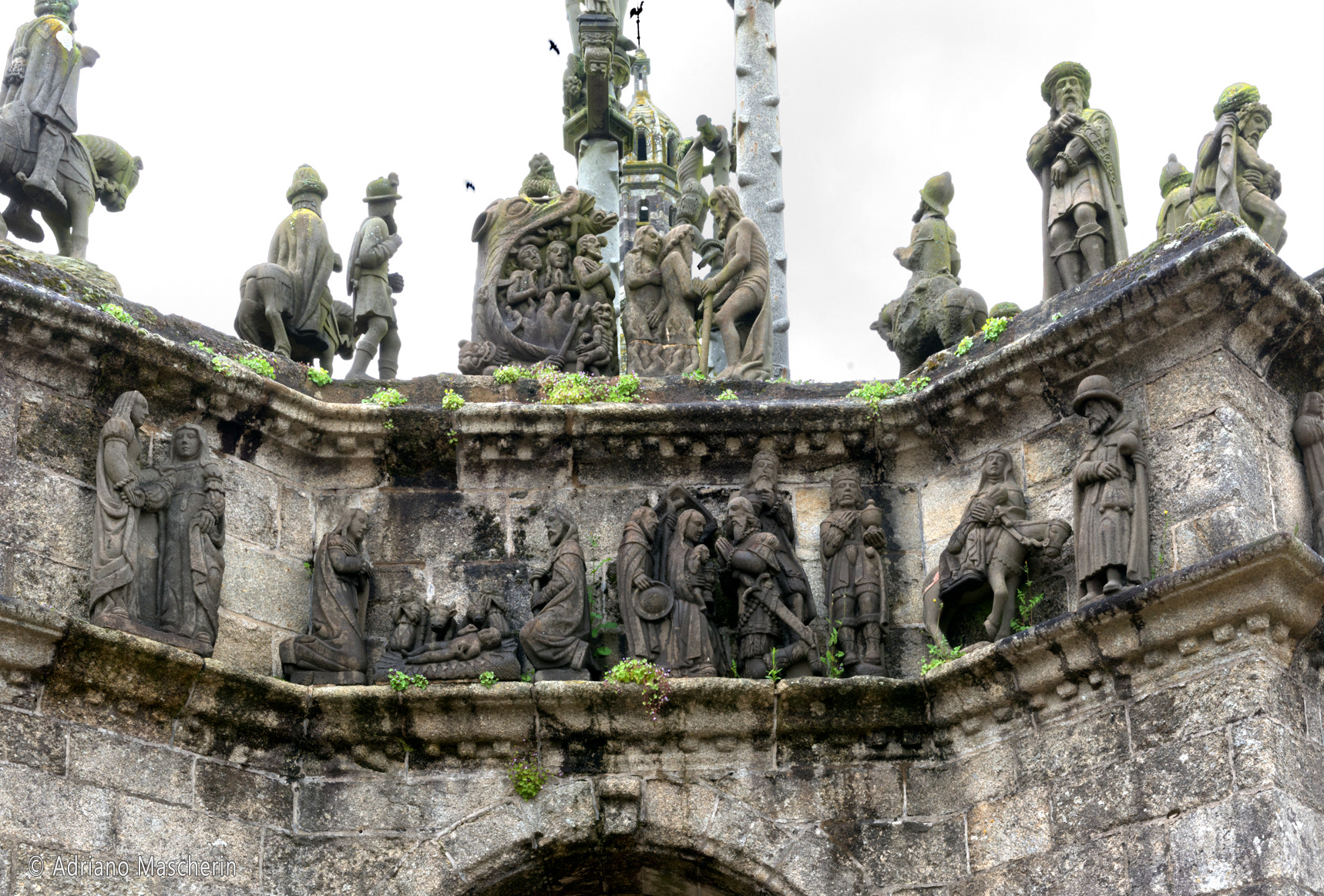
Pleyben
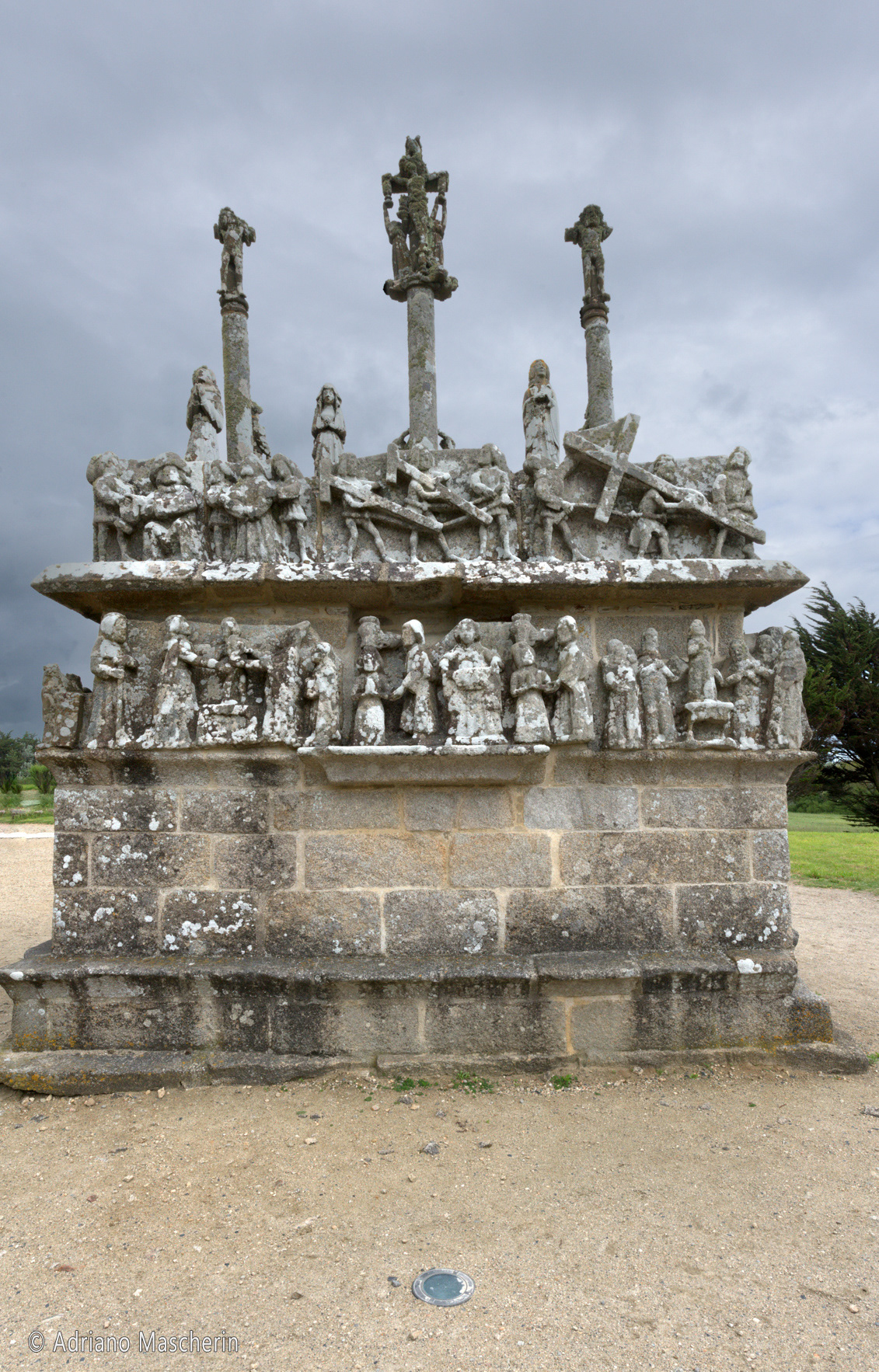
Plomeur - Notre Dame de Tronoan
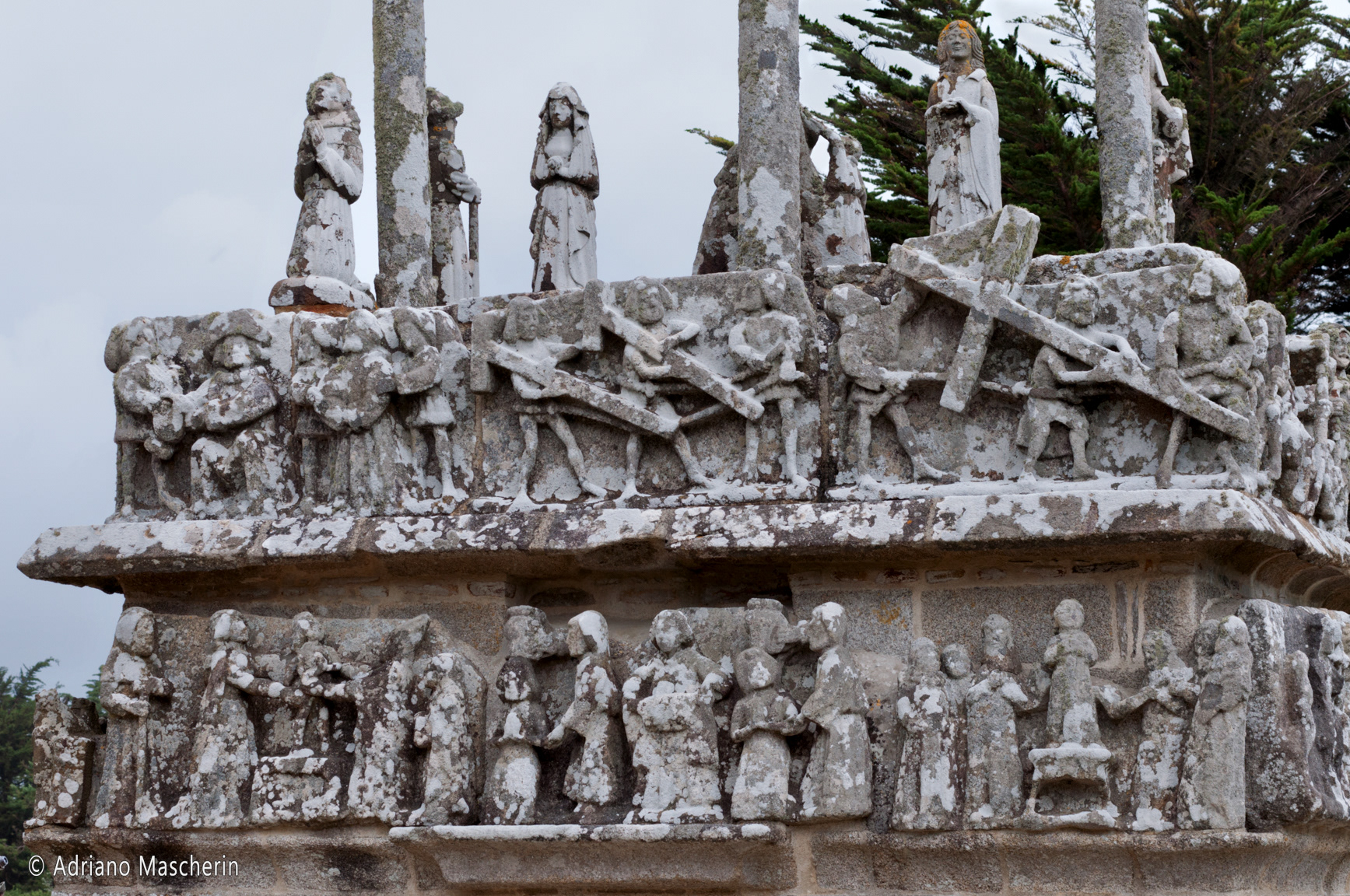
Plomeur

Plomeur
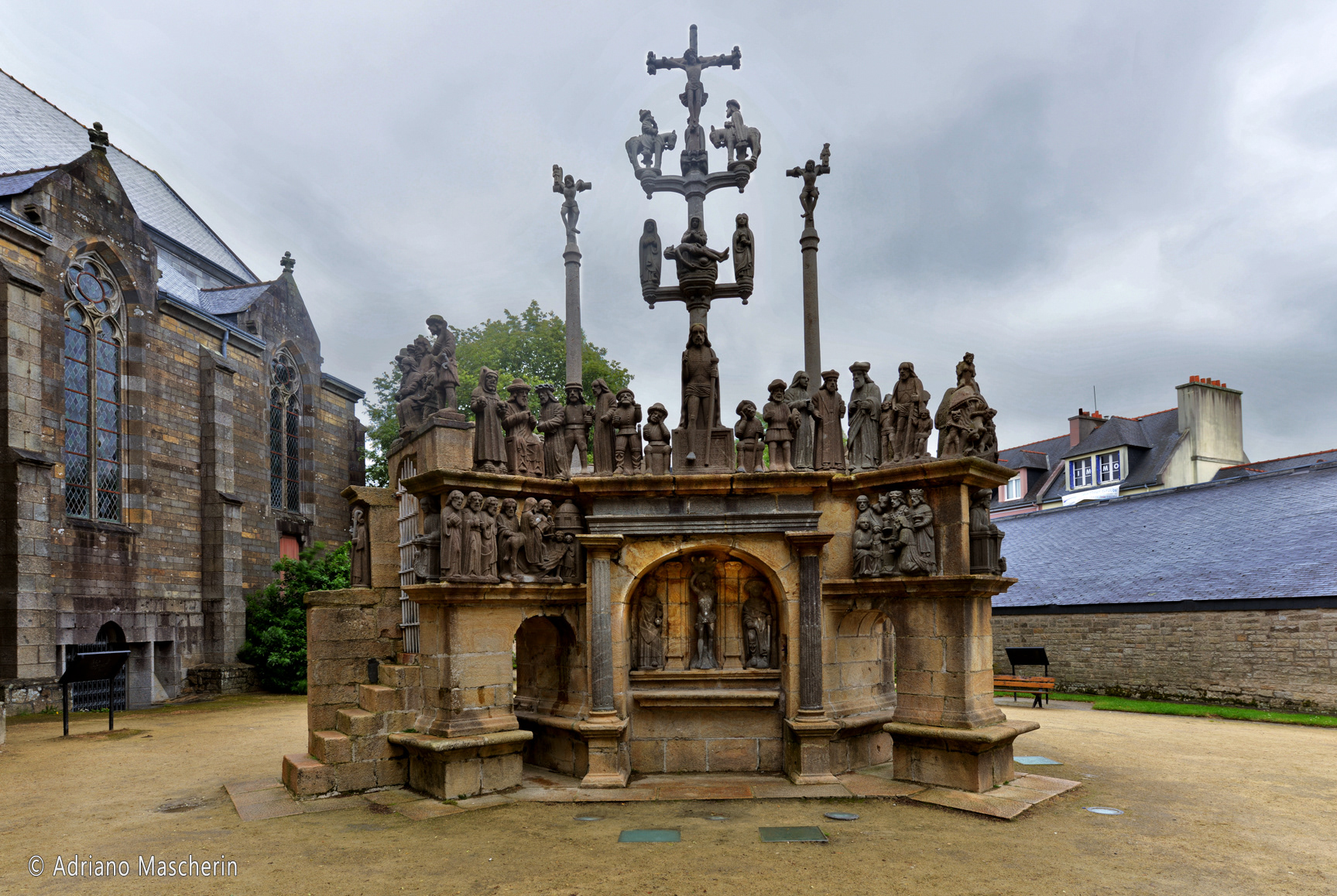
Plougastel
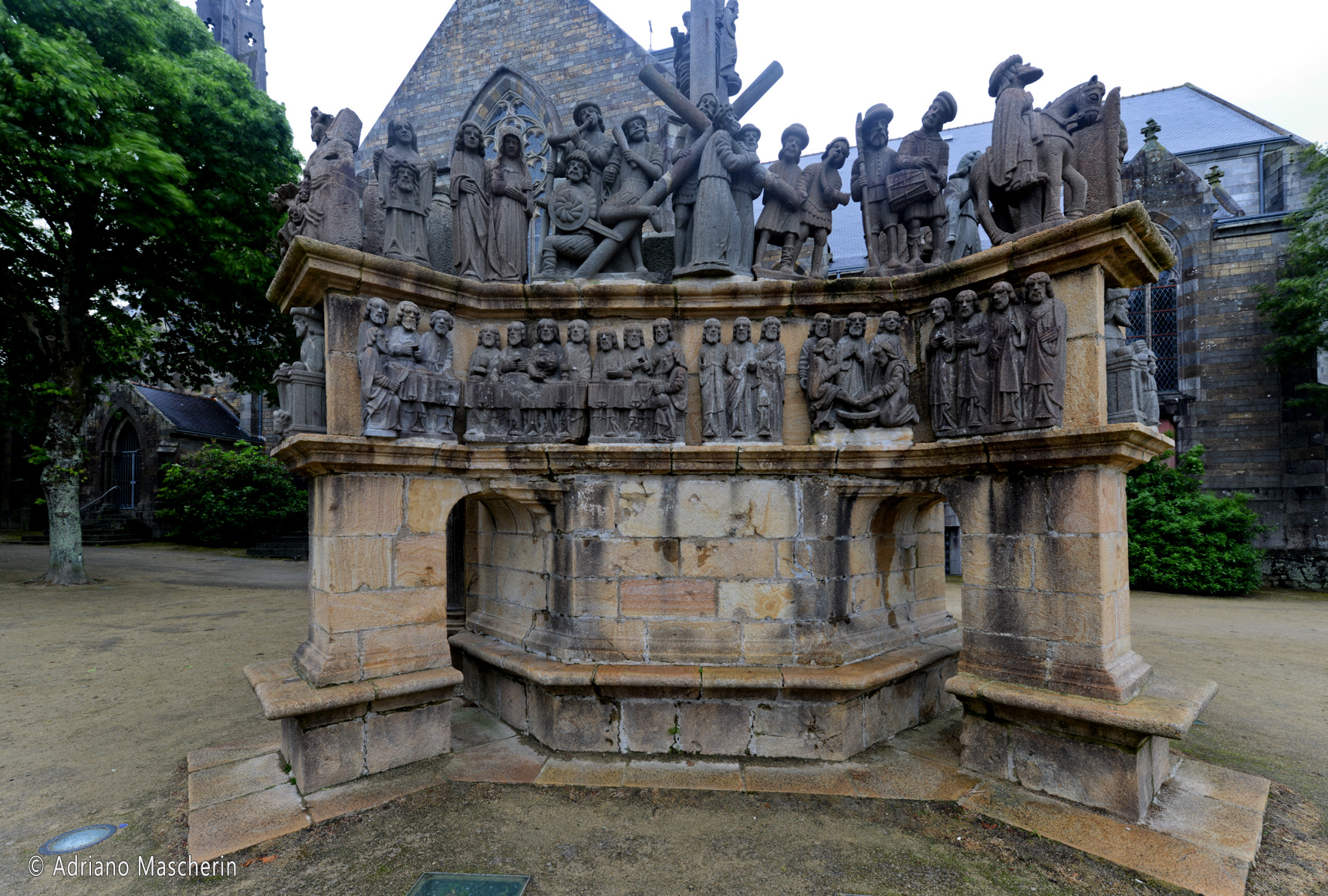
Plougastel
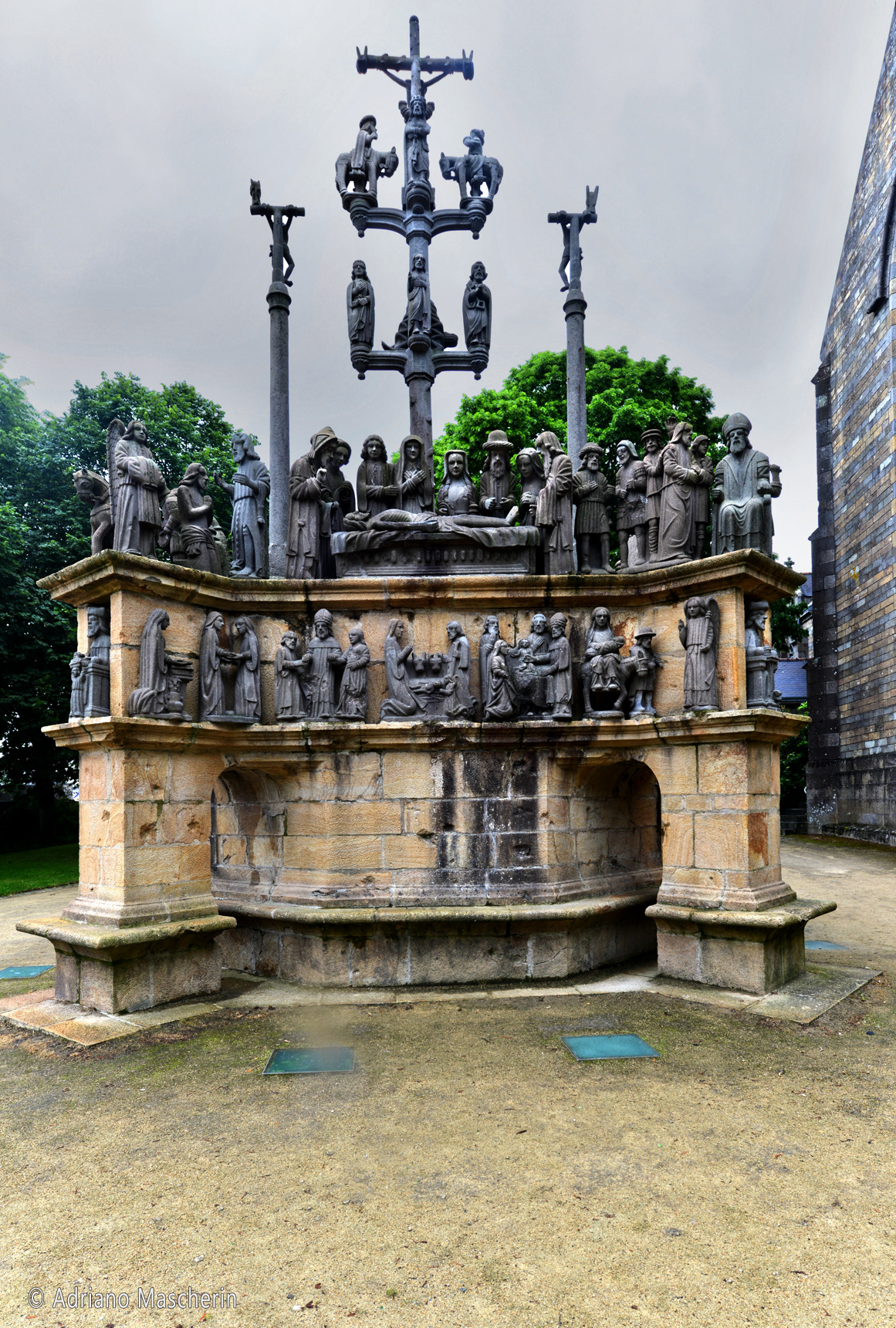
Plougastel
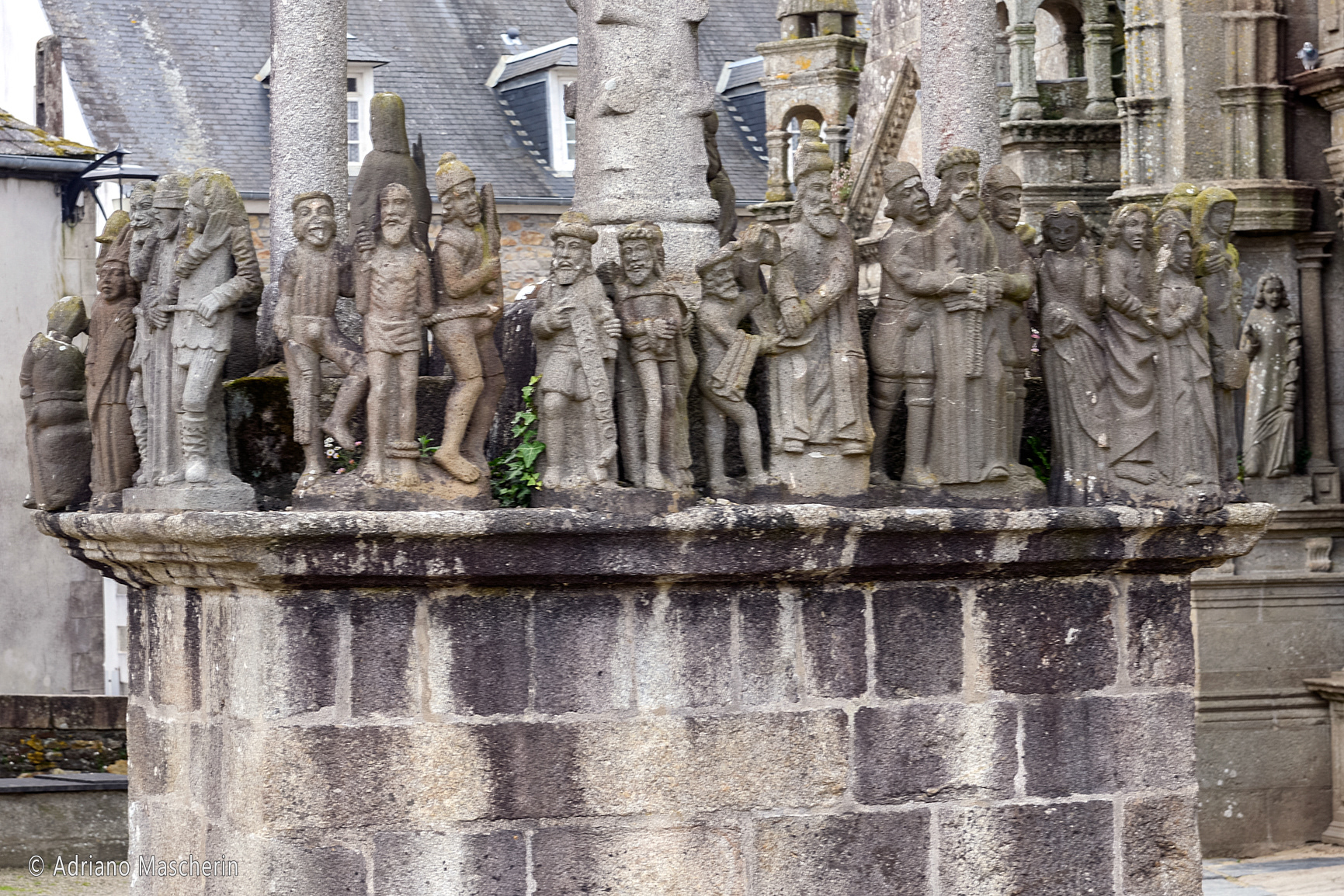
Thegonnec
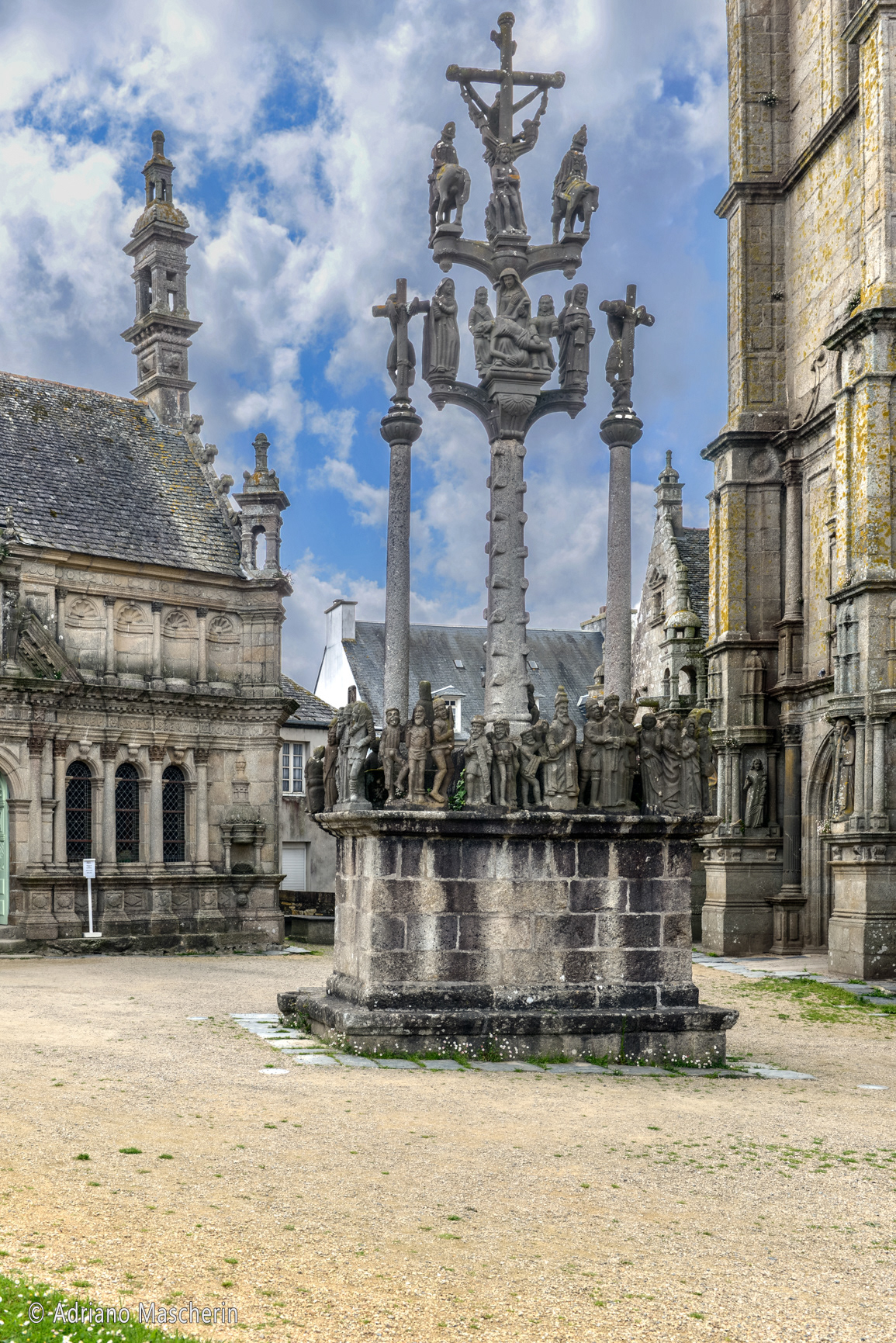
Thegonnec
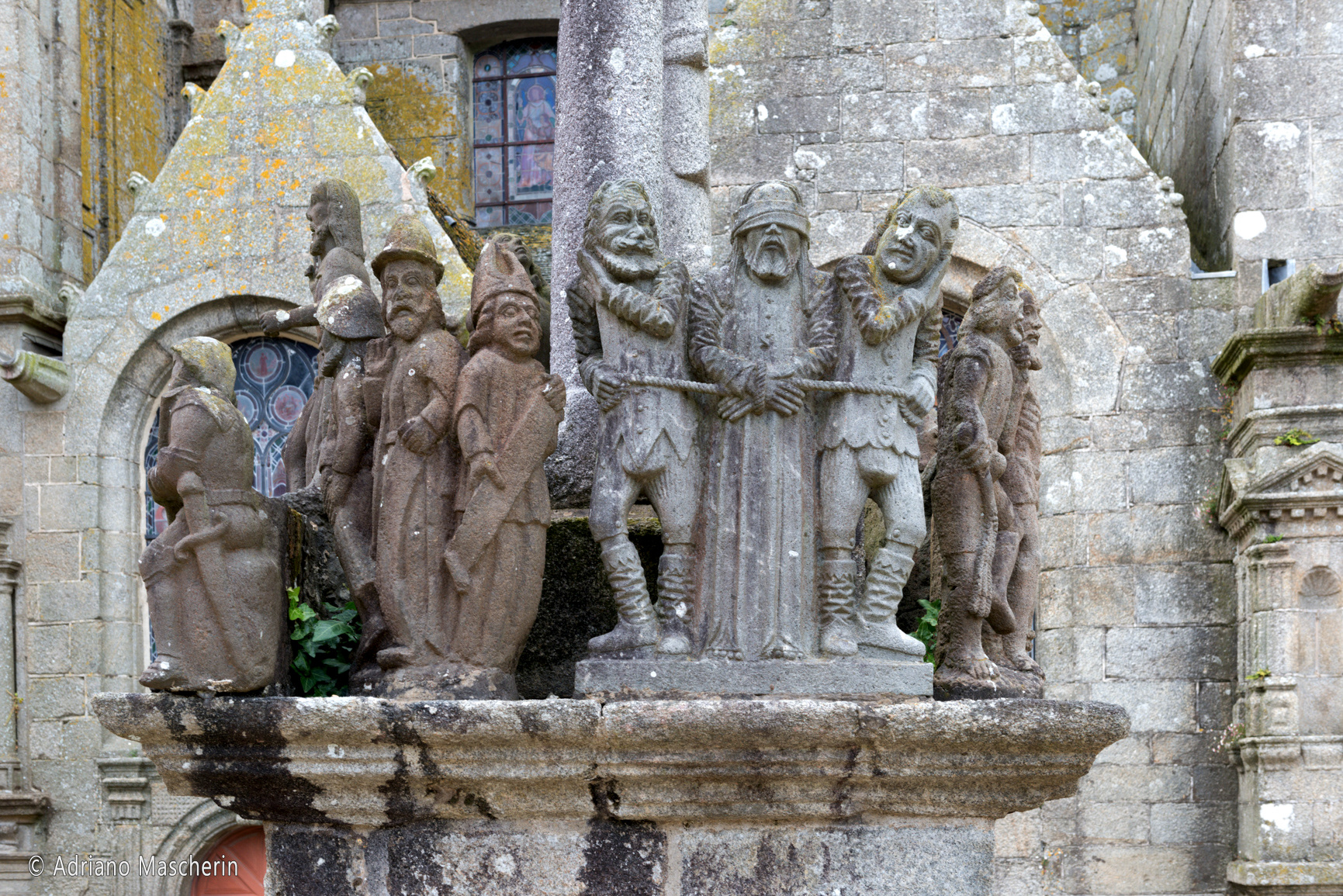
Thegonnec
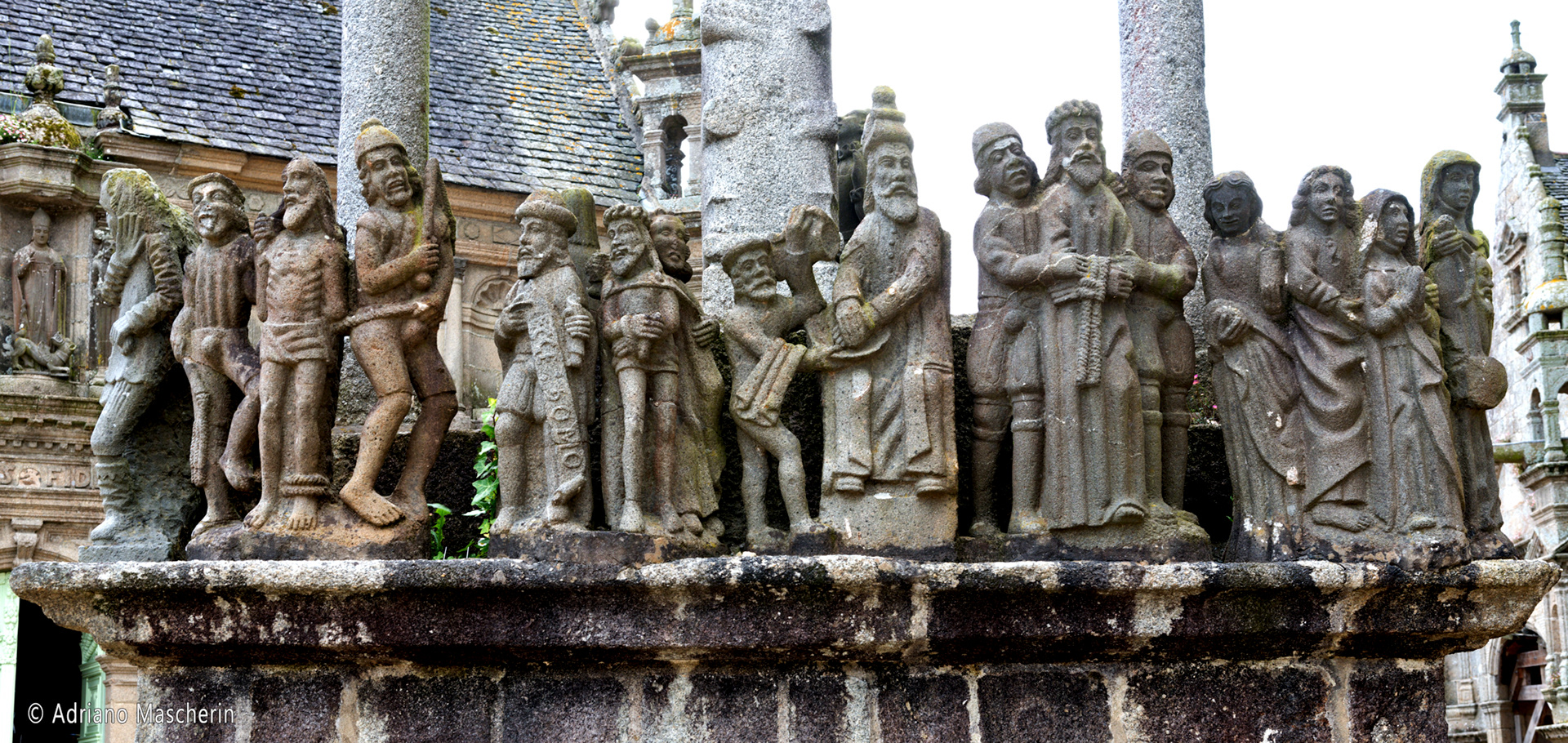
Thegonnec
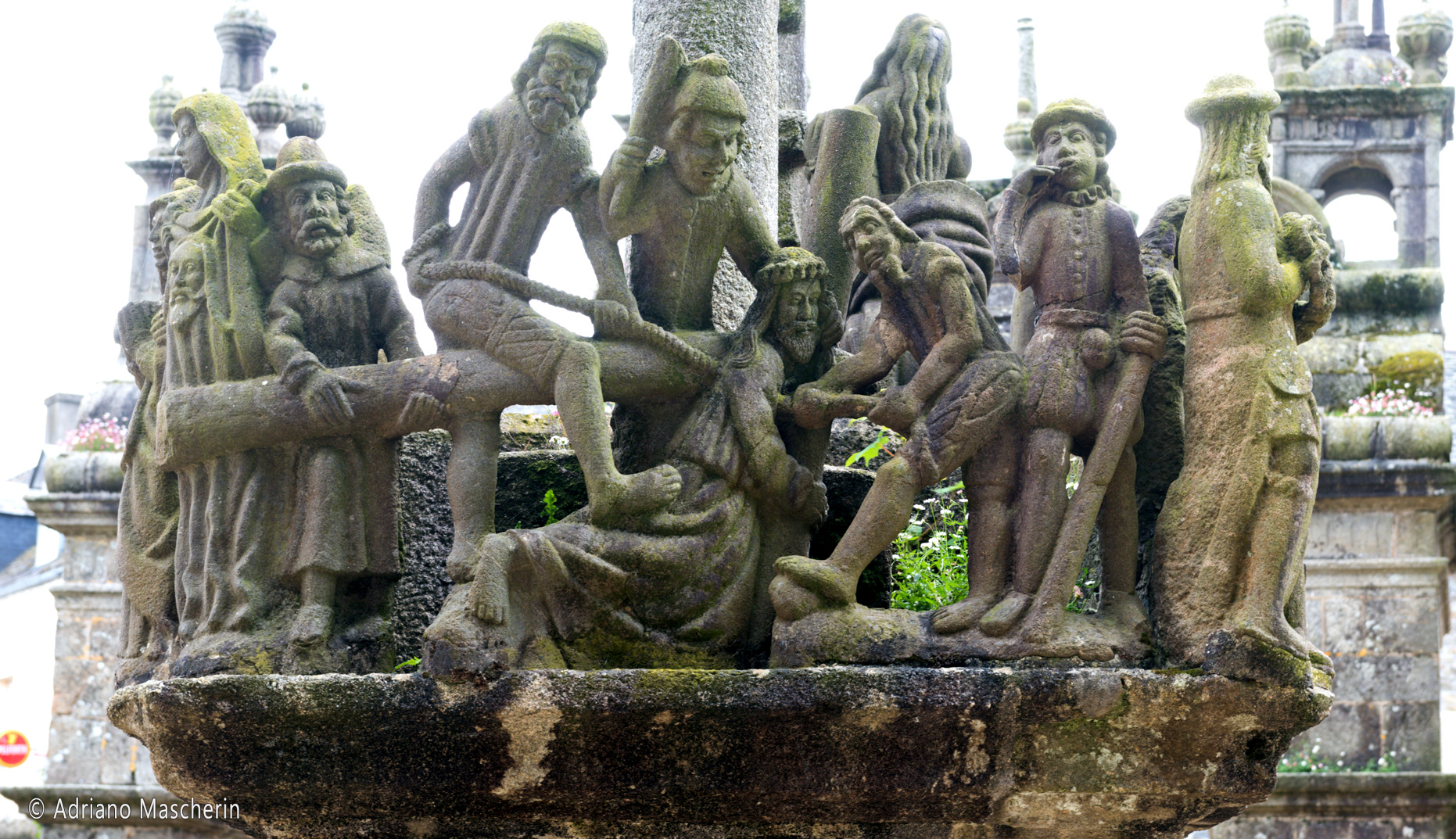
Thegonnec
